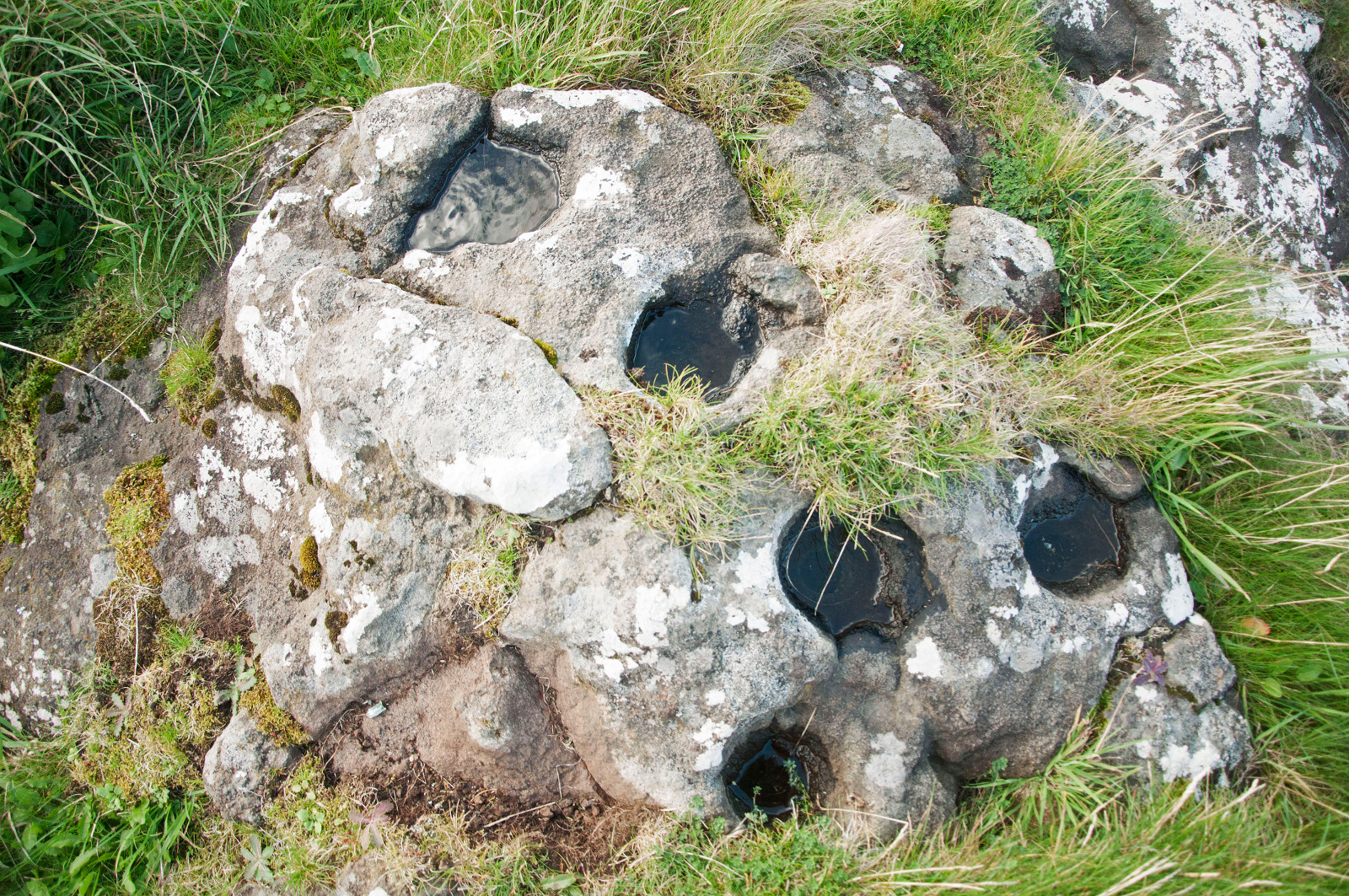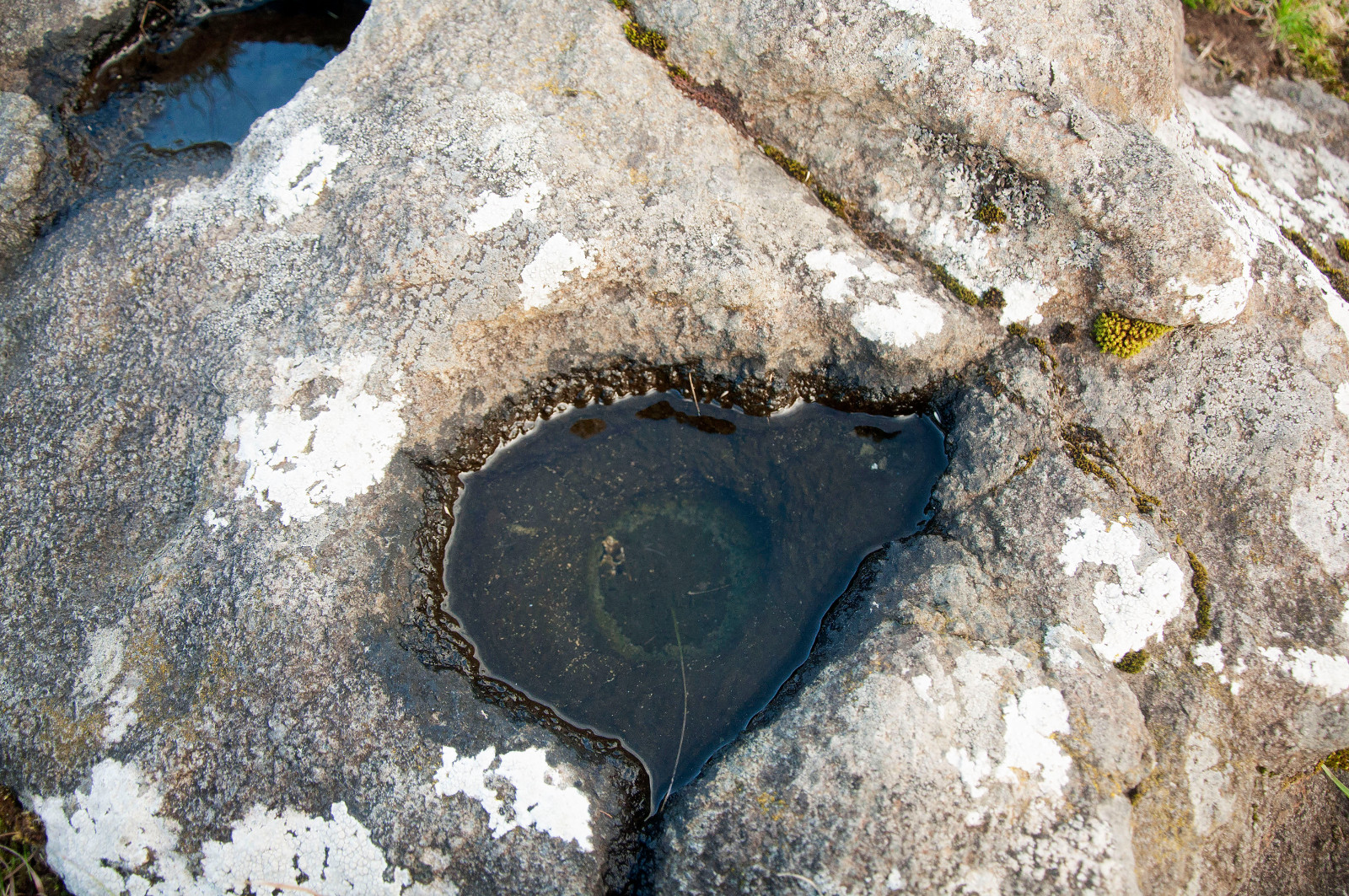The harbour at Galmisdale is today's entry point onto the Isle of Eigg, and hosts some fascinating archaeological features.
The bay boasts three landing places - the remains of the old Clanranald harbour to the north-west, the large modern pier, and a smaller slipway.
Above the slipway and partially covered by the modern tearoom are the remains of a huge circular wall on a small promontory. Given its position and size, it is likely to be a defensive structure, possibly a dun of Iron Age date.
On the NE side of the dun, on the cliff edge overlooking the water just before the modern pier, there are some interesting features that merit further inspection.
These are bait holes.
Bait holes are found all the way down the west coast of the Scottish mainland and on the islands. They are almost unique to this area in fact, with only one recorded instance in the east, at North Berwick. Functioning rather like a mortar, there were used by fishermen to break and mash up shellfish, and for storing the subsequent bait.

They are often mistaken for cup marks (a form of ancient Neolithic art), but their size, their situation, and the lack of additional rings or decoration discount them as such.

Bait holes are of interest as they also marked spots that were best for rock-fishing (creagaireachd). In the past, fishing was not just for pleasure – it was a source of food for families and communities. Eigg has long been noted for its abundance of fish, and the presence of bait holes seems to support that suggestion.
Bait holes can be natural, or man-made; in the case of these particular ones, we can see that a natural rock formation has been modified by human hands (the hollows have been smoothed and widened) to better suit its purpose.
The presence of bait holes (in addition to multiple harbours) reminds us that, as well as being a fertile farming community, Eigg also boasted substantial fishing, with its surrounding waters providing subsistence for its inhabitants – this is re-iterated by the presence of almost identical features directly across the sea at Arisaig.

